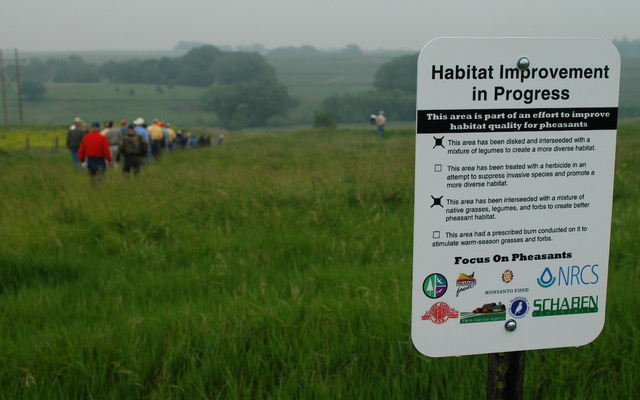Why habitat improvement programs are just as important as land acquisition
People always talk about quality over quantity, but why not have both?
Protecting natural habitat in perpetuity and increasing public land access are vital aspects of modern conservation, but the job’s not done once the land has been protected. You could preserve a gazillion acres, but it won’t do anyone (or anything) much good if it’s nothing but a sea of brome grass. True conservation lies in improving these acres after they’ve been conserved — raising the quality to match the quantity. That’s where habitat improvement programs like the new Ohio Habitat Share come in.
The Ohio Department of Natural Resource’s (ODNR) Division of Wildlife recently announced a new five-year “Habitat Share” partnership to enhance upland bird habitat on public land across the state. The work will be funded with Pittman-Robertson Act dollars contributed by the Ohio Division of Wildlife, in conjunction with matching funds provided by Pheasants Forever and Quail Forever. The partnership is on track to improve up to 3,000 acres in its first year.
This new initiative joins a growing list of partnerships across the country that are actively improving habitat on existing public lands.
“Nearly 40 percent of the United States is public land, so it’s imperative for us to maintain the resiliency of these landscapes. We have numerous states across the country that are shining examples of this principle,” said Maia Larson, Pheasants Forever and Quail Forever’s conservation program manager. “It’s our collective responsibility to take ownership of these lands, and whether it’s through a Hands-on Habitat Day with your local chapter or one of these improvement partnerships, we need to continue actively managing and enhancing the quality of existing acres.”

Nebraska
Nebraska has a longstanding Habitat Share program that works in much the same way as Ohio’s new initiative, leveraging Pheasants Forever and Quail Forever chapter dollars and public partnerships alongside federal Pittman-Robertson funds. Since 2010, Habitat Share in Nebraska has impacted 40,807 acres on 130 WMAs and spent $4.6 million on habitat improvements increasing public hunting opportunities around the state.
Michigan
Michigan was another early proponent of habitat improvement programs, and their Adopt-a-Game-Area initiative boasts a partnership between Pheasants Forever and Michigan Department of Natural Resources, aimed at accelerating grassland restoration on public land. It also allows public sponsorship of habitat projects on state lands. Through the Michigan Adopt-A-Game-Area Program, Pheasants Forever has raised over $1.4 million to restore and enhance over 2,100 acres of grasslands.
Idaho
Pheasants Forever is the leading the implementation of a 600,000-acre NEPA plan (the largest sagebrush restoration plan ever completed on BLM lands) to restore the sagebrush ecosystem in southwest Idaho in an area known as the BOSH project. In two years, Pheasants Forever has treated 69,226 acres of invading juniper, and in 2022 the program also secured over $1 million in funding for an anticipated 45,000 acres of sagebrush restoration treatments in 2023. All this work benefits sage grouse, chukar, Hungarian partridge and California quail.
Minnesota
Minnesota has numerous initiatives to improve its existing public lands. Through various partnerships with the US Fish and Wild Service, MN DNR, Lessard-Sams Outdoor Heritage Council (LSOHC), Legislative-Citizen Commission on MN Resources (LCCMR), Conservation Partners Legacy (CPL), North American Wetlands Conservation Act (NAWCA) and other NGOs, over 60,000 acres have been improved in the last five years on public lands in Minnesota. Improvement practices have included prescribed fire, conservation grazing, wetland restoration, diversity seeding, brush shearing and tree removal.
An example of just one of these partnerships is with Minnesota Sharp-tailed Grouse Society and LSOHC to create the Enhanced Public Lands – Open Landscapes grant program with the goal of enhancing open landscape habitat in the Northern Forest and Forest/Prairie Transition regions. To date, the project has enhanced 2,403 acres of brushland habitat and has contracted another 1,910 acres of brushland enhancement under its current phase. Phase II will begin in the winter of 2023 and will seek to enhance another 3,600 acres.
The next time you ask yourself, “Are our public lands being managed?” The answer is “yes,” they certainly are, and organizations like Pheasants Forever and Quail Forever are at the pointy end of the spear. It’s also important to remember quality habitat isn't built in a day. Wetland restoration, prescribed fire and conservation grazing can make landscapes look underwhelming in the short term, but long-term results are what really matter.
Slow and steady wins the race.